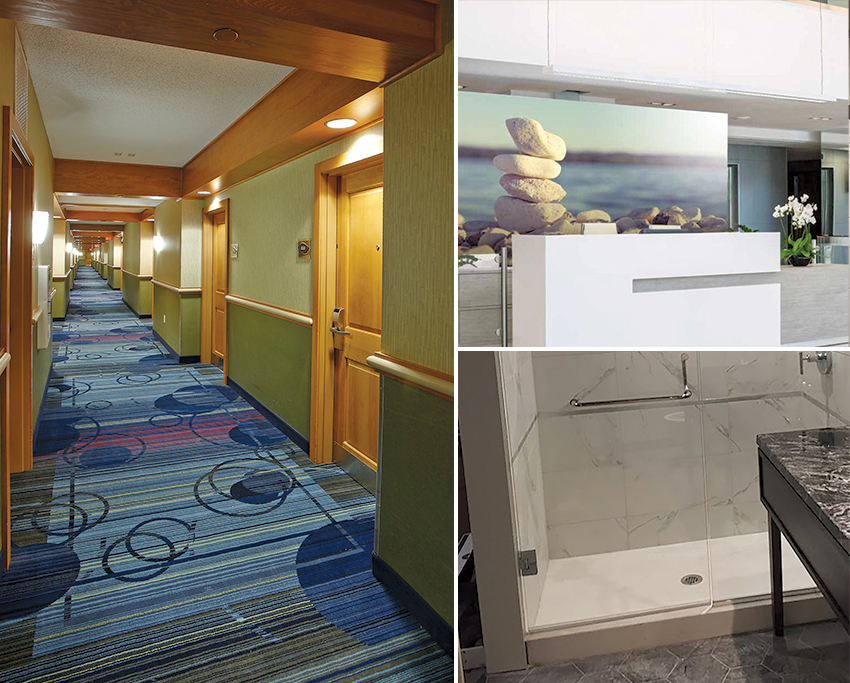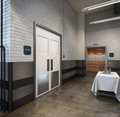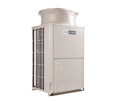Hospitality and Retail Design Update
Operating for Durability and Maintenance
It is commonly acknowledged that the public areas of a hospitality or retail facility are typically where most of the effort and money are spent in both design and maintenance. The common mindset is that front of house is where the guests, patrons, or diners will spend their time (and money) and evaluate it as part of their overall experience. But, what about the back of the house—places like kitchens, service corridors, employee lounges, administrative offices, loading docks, storage, and the like? There may be some design factors that a general manager or an architect might not always have in mind, but in the interest of smooth facility operations, long-term durability, and ease of maintenance, they really should.
The back-of-house areas are typically where the actual work of the business is conducted. For a restaurant, it’s the kitchen; for a hotel, it’s the administrative or catering office or laundry; in many retail facilities, it’s the storage areas and receiving docks.
Depending on the size of facility and the time of day, these spaces can be the focus of a great deal of activity, some of which may not be kind or forgiving to the building walls, floors, doors, or other surfaces.
Recognizing these demands, building designers must not only consider aesthetics and design appearance when selecting materials and finish products, they must also consider durability and the impact of their selection beyond first costs. It usually falls to the architects to act as the holistic warriors that can champion the appearance and performance of the entire facility—both front of house and back of house. Sometimes improperly executed value engineering is undertaken to reduce first costs, but it can then take its toll six to 12 months after the ribbon cutting. Corners that are cut through the selection of less expensive materials or the outright elimination of key products eventually show up through damage or vandalism. Then the property’s general manager or chief engineer has no choice but to find money in the operating budget to install new products to replace broken/torn ones or to fix damage—all of which would likely have been less expensive to install in the first place during the construction or renovation of the facility.
What type of products are we talking about? First and foremost is various door and wall protection products, including high-impact decorative wall panels, corner guards, and wall base. Heavy-duty interior protection products, such as wall and floor bumpers, door frame protectors, and expansion joint covers, are appropriately used in corridors and back-of-house applications where carts and other equipment move. It is worth noting that such corridors often include customer restrooms and may act as a passageway from back-of-house areas. It’s these transition zones that are often overlooked in design and planning, and end up looking war-torn and battered within months of the grand opening. In this case, a bit of protective forethought will keep this area looking new and undamaged. However, adding protection doesn’t mean that design needs to suffer. Woodgrain rigid vinyl sheet, stainless steel, and 3-D trim boards have been used extensively in renovating both elevator cabs and food service areas of hotels, restaurants, and retail facilities. There are also solid surface materials that can provide a clean, durable, high-end look emulating stone but at a fraction of the cost. When used in bathroom settings, these materials also help prevent mold and mildew since they typically don’t have the grout lines of other materials. Similar durable products are available that even incorporate wall art.
Durable fabrics are another product type that have become popular for back of house, front of house, and transition spaces. There are usually more places to consider durable fabrics than may first come to mind, such as drapes, nets, bedding fabrics, roller and vertical blinds, awnings, room dividers, upholstery fabrics, and wall coverings. Usually, the first consideration is fire code ratings for flame-retardant properties, which most commercial fabrics can meet. Beyond that basic requirement is the ability of the fabric to hold up over time in terms of the integrity of the fabric itself, its color-fast properties, and ability to withstand repeated cleanings. Of course, these fabrics are part of the indoor environment and may come in contact with people more so than other building products so their safety in terms of health effects on people needs to be documented.
Signage is another important aspect of facility maintenance and operations so choosing a signage system that can hold up to the rigors of commercial use should be considered. One-piece, back-painted photopolymer signs with frosted paint and colored accents have become commonly used in these situations. The use of photopolymer signs delivers two key design benefits. First, it allows virtually any design to be applied to a sign, including logos, artwork, and other unique markings. Secondly, the material has been tested and proven to stand up to heavy usage, abuse, and even vandalism.

Images courtesy of Inpro
Durability of wall surfaces in both the front-of-house and back-of-house areas often depends on the use of protective products, such as wall and door panels and bumpers—including some that look like wood, stone, or even incorporate artwork.
Notice

www.amerlux.com

www.mockett.com/levity

www.hawa.com

www.inprocorp.com/ipc

MitsubishiPro.com/ready/innovation

www.nanawall.com/applications/commercial

www.pellacommercial.com/monumental-windows

www.hooksandlattice.com/custom-marek-planters.html









